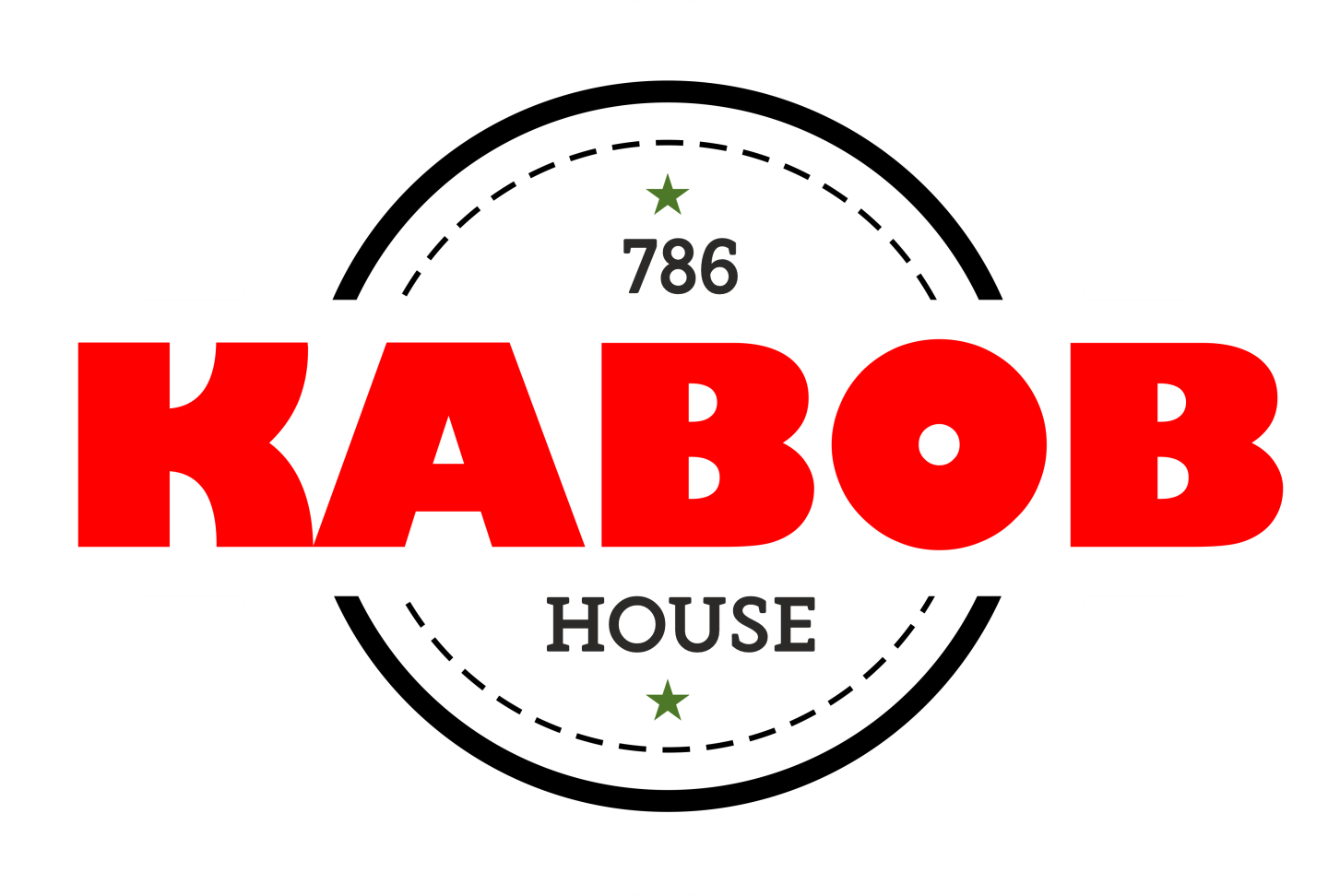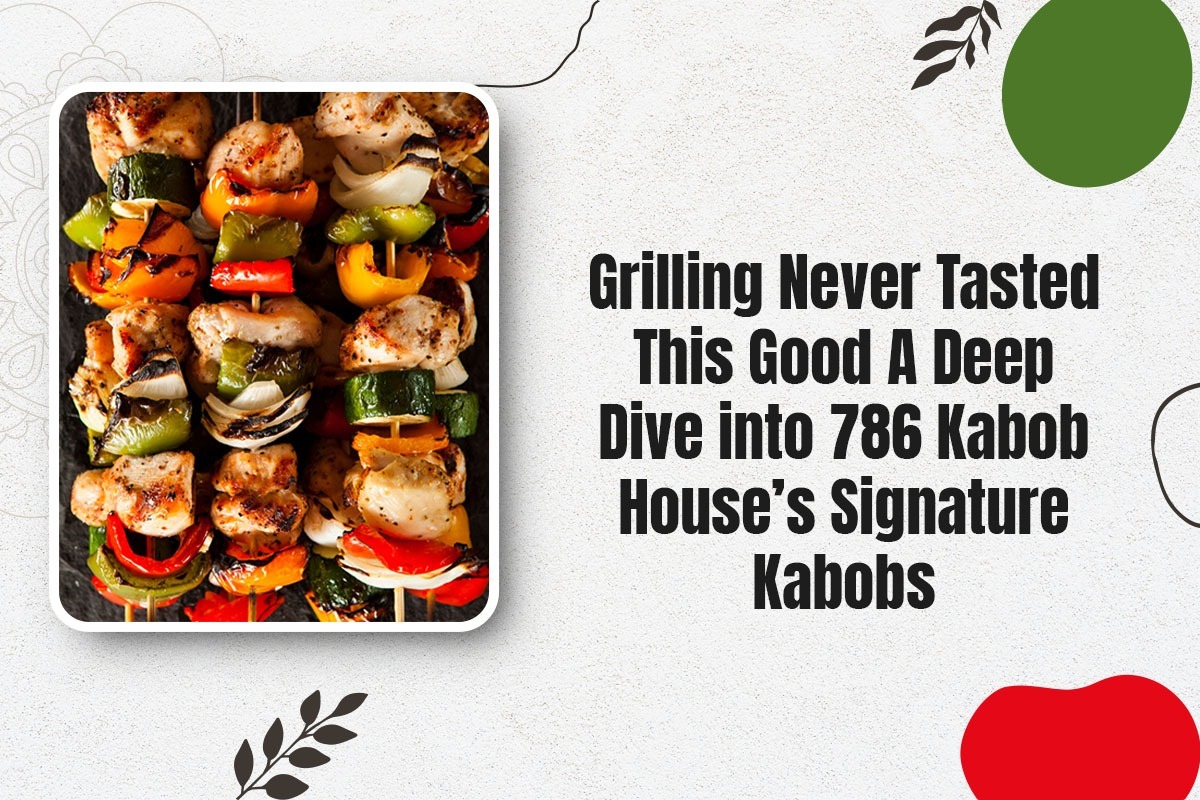Subtotal: $318.00
Grilling Never Tasted This Good: A Deep Dive into 786 Kabob House’s Signature Kabobs
There’s a modest magic to a perfectly grilled kabob: sizzling meat threaded on a skewer, the char at the edge, the steam of spiced juices meeting warm bread. If you live in or around Newark, CA, 786 Kabob House has quietly become a go-to for that kind of straightforward, smoky delight. This post is a close look at their signature kabobs — what goes into the marinades, how they’re cooked, why the choice of meat matters, and how to order like you mean it. Consider this your one-stop guide to the best kabobs in Newark CA, with practical tips and mouthwatering detail.
Why Kabobs? A Quick Flavor & Culture Primer
Kabobs (also spelled kebabs) trace back centuries across the Middle East, Central Asia, and the Indian subcontinent. At their core is a simple principle: quality protein, bright seasoning, and direct heat. Whether it’s lamb, beef, or chicken, the success of a kabob comes down to two things: the marinade and the grill. Get those right and you’ve got a dish that’s more than the sum of its parts — tender, aromatic, and perfectly charred.
When we talk about a halal kabob menu like 786 Kabob House’s, there’s also a cultural layer: halal preparation, respect for the ingredients, and flavors that lean on cumin, coriander, garlic, yogurt, and sometimes saffron. But the specifics? That’s where a restaurant builds a reputation.
Meet the Menu: What Makes 786 Kabob House Stand Out
786 Kabob House is not inventing the kabob wheel — they’re sharpening it. Their menu leans on classic East-style marinades and charbroiling technique. What sets them apart is consistent seasoning, balanced fat ratio in the meat, and a grill approach that achieves a crispy exterior and juicy interior. These are hallmarks of any kabob house specialties you’d want to recommend.
In this post, we examine six signature offerings:
- Lamb Kabob
- Teka Beef Kabob
- Chicken Kabob
- Chaplee Kabob
- Combination Kabob
- Sampler Kabob
Each gets its own deep dive: marinade, cut of meat, grill technique, plating, and pairing suggestions.
Lamb Kabob — The Classic, Elevated
Why lamb? Lamb carries a natural richness and slight gaminess that stands up to strong seasonings. When done correctly, it’s tender with a complex flavor profile.
Typical marinade:
- Yogurt base (tenderizes)
- Garlic and ginger paste
- Lemon juice or vinegar (brightens)
- Ground cumin, coriander, and black pepper
- Salt and a touch of turmeric or paprika for color
- Optional: a small splash of oil to help the spices adhere
Meat choice & prep: 786 Kabob House likely uses leg or shoulder cuts for balance — enough fat for flavor but not so much that the pieces flare up on the grill. Chunks are usually cut uniformly (about 1–1.5 inch) for even cooking.
Grill technique: Charbroil over medium-high heat. The grill should be hot enough to sear the outside quickly (locking juices in) but managed to avoid a burnt interior. Rotate skewers frequently for even char.
What makes it shine: The tang of yogurt and lemon against the lamb’s richness, finished with a squeeze of fresh lemon and a sprinkle of sumac or cilantro. Served with grilled tomato, basmati rice, and house chutney, a lamb kabob becomes a centerpiece meal.
SEO nod: If you search “best kabobs in Newark CA” you’ll find locals praising restaurants that get lamb right — and lamb done well is why 786 Kabob House shows up in those conversations.
Teka Beef Kabob — Beef with Bite and Balance
What is teka? Teka (or taka) style often refers to minced or cubed beef prepared with aromatic herbs and spices. At 786 Kabob House, the Teka Beef Kabob is a favorite for people who like beef with a little texture.
Marinade & seasoning:
- Minced beef or cubed steak (lean cut with small fat reserves)
- Finely chopped onions (adds moisture)
- Garlic, cilantro, and green chili for bite
- Cumin, coriander, salt, and pepper
- Sometimes an egg or breadcrumb binder in minced versions
Texture matters: Teka beef can be ground or finely chopped — either way, the texture should hold together on the skewer without crumbling. Balancing fat keeps the kabob juicy; too lean and it dries out.
Grill approach: High heat, quick sear. For minced teka kabobs, press firmly on the skewer and watch carefully — they cook fast. For cubed Teka, treat similarly to lamb but adjust time for doneness preference.
Why diners love it: Beef delivers a heartier mouthfeel. Paired with charred peppers or onion and served on pita or rice, it’s satisfying without being fussy.
Chicken Kabob — The Lean, Flavorful Favorite
Why chicken? Chicken is versatile, absorbs marinade beautifully, and pairs well with lighter sides. A properly marinated chicken kabob delivers tenderness without drying.
Marinade staples:
- Yogurt or buttermilk (helps tenderize)
- Lemon juice, garlic, and ginger
- Paprika, cumin, coriander, and a pinch of garam masala for warmth
- Salt and a drizzle of oil
Cut of chicken: Boneless thigh pieces are preferred for juiciness and flavor. Breast can be used for leaner options but needs careful timing to avoid drying.
Grill technique: Medium-high heat with attention to internal temperature (165°F / 74°C). Thighs allow brief, high heat sear with a tender interior. Frequent turning keeps char even and prevents flareups from the marinade’s oil.
Standout details at 786: Crisp edges, smoky aroma, and a citrus finish make the chicken kabob bright and approachable — a good entry point for new kabob eaters.
Chaplee Kabob — A Flavor Bomb with Texture
What is Chaplee? Chaplee (often spelled chapli) kabob originates from the Pashtun regions and is traditionally a spiced minced meat patty. It’s aromatic, flattened, and pan-fried or grilled.
Key ingredients & flavor profile:
- Coarsely minced beef or lamb
- Lots of fresh cilantro and green chilies
- Crushed pomegranate seeds or dried mango powder (amchur) for tang (sometimes)
- Cumin, coriander, garam masala, and crushed coriander seeds for texture
- Optional: tomato pieces and onion for moisture
Cooking method: Unlike the skewer kabobs, chaplee is often flattened and cooked like a patty. At 786 Kabob House it may be served grilled or pan-charred, giving a crunch on the outside and moist crumb inside.
Why it stands out: The mix of fresh herbs and coarser spices creates a texture and flavor contrast — herbaceous, slightly tangy, with crunchy fried edges. Perfect with naan and a cooling raita.
Combination Kabob — Best of Multiple Worlds
What it is: A Combination Kabob plates together multiple proteins — usually chicken, lamb, and beef — giving diners textural and flavor variety in a single order.
Why order it: If you’re unsure which kabob you want (or you want to share), the combination is a practical, satisfying choice. It’s also a good way to taste the restaurant’s technique across proteins.
Taste & balance: A well-composed combination plate alternates pieces on the skewer or presents separate skewers to maintain correct cook times for each protein. The marinade profiles are usually consistent — a house base with slight tweaks for each meat.
Serving suggestions: Pair with basmati or saffron rice, grilled veggies, and a yogurt sauce. Sharing a combination order is great for small groups or mixed palettes.
Sampler Kabob — The Tasting Menu for Curious Eaters
How it differs from Combination: A Sampler is typically smaller portions of each kabob, geared for tasting rather than a full meal. It’s perfect for first-timers who want to profile the entire menu without committing to a single entrée.
Why 786’s sampler works: Good sampler portions preserve the integrity of each kabob while allowing sampling across profiles — spicy, tangy, smoky, and herbaceous — so you can decide what to order next time.
Pro tip: Order the sampler with extra bread or rice; it’s a great way to build a complete meal out of small plates.
The Marinades: Science + Soul
Across the 786 Kabob House menu, marinades show a clear understanding of technique:
- Acid + Enzyme (yogurt, lemon, ginger) — tenderizes and develops flavor
- Fat (a touch of oil or fatty cuts) — carries fat-soluble spices and helps char
- Salt — seasons deeply; often applied early so it penetrates
- Spice balance — cumin and coriander give warmth; chili and black pepper add heat; garlic and onion build umami
- Herbs and citrus — fresh cilantro, lemon finish, and sometimes sumac or pomegranate notes add brightness
The result is layered flavor: immediate charred taste, then a mid-palate of spices, finishing with bright citrus or herb.
Charbroiled Skewers: Technique That Matters
“Charbroiled skewers” isn’t a marketing phrase — it’s a technical choice. Char adds Maillard reaction flavor (that toasty, savory note), and a properly managed char keeps insides juicy.
Key elements of good charbroiling:
- Hot grill with zones (direct for sear, indirect for finishing)
- Evenly sized pieces for uniform cooking
- Wooden skewers soaked or metal skewers for heat conduction
- Frequent turning for crosshatch char and prevent burning
- Resting time after cooking so juices redistribute
786 Kabob House applies these classic techniques. The result: skewers that are smoky on the outside and tender within — a major reason people label places as having the best kabobs in Newark CA.
Pairing Suggestions — Rice, Bread, Sauces, and Drinks
A kabob is great on its own, but pairing elevates it.
Staples:
- Basmati or Quabili Pallow — fragrant rice balances charred meat.
- Naan or pita — for wrapping and soaking up sauces.
- Grilled vegetables — onion, tomato, bell pepper add sweetness and texture.
- Yogurt sauce / raita — cools and complements spicy notes.
- Hot sauce / chutney — for acid and heat.
Drink pairings: Lighter beers, mint tea, or a traditional Dogh (yogurt drink) are perfect. Dogh works especially well with lamb and beef as it refreshes the palate.
Ordering Tips & How to Get the Most Flavor
- Ask for crisped edges if you like a stronger char.
- If you prefer leaner cuts, request breast for chicken or trimmed cuts for beef.
- For group orders, the Combination or Sampler lets everyone taste.
- Add a side of grilled vegetables and a yogurt sauce to balance richness.
- If you’re new to halal kabob menus, start with chicken — approachable and reliable.
Nutrition Snapshot (General Guidance)
- Kabobs are relatively straightforward nutritionally:
- Protein rich and filling.
- Fat content varies by cut: lamb and certain beef cuts are higher in fat (more flavor), chicken and lean beef lower.
- Grilling cuts fat compared to frying, but marinades with oil add calories.
- If you’re watching calories, choose chicken kabob, request less oil, and pair with salad or grilled veggies instead of heavy rice.
Why 786 Kabob House Deserves a Spot on Local “Best” Lists
There are three practical reasons 786 Kabob House often appears in local searches for best kabobs in Newark CA and halal kabob menu queries:
- Consistency: Flavor balance is steady across visits — same char, same seasoning profile.
- Technique: They use appropriate marinades and manage the grill well, producing the desired char without drying proteins.
- Variety: From chaplee to combination platters, the menu gives options for every taste and group size.
These characteristics are what turn a one-time bite into repeat visits and strong local word-of-mouth.
Sample Social Copy / SEO Blurbs You Can Use
Short Google My Business blurb: “Craving the best kabobs in Newark CA? 786 Kabob House serves charbroiled skewers and a tasty halal kabob menu — try the lamb or combination platter today.”
Instagram caption: “Smoke + spice = perfection. Which kabob is your go-to at 786 Kabob House? #KabobHouseSpecialities #NewarkEats #HalalKabobMenu”
FAQ — Quick Answers (Good for Voice Snippets and Featured Snippets)
Q: Are 786 Kabob House kabobs halal?
A: Yes — the menu is presented as a halal kabob menu, with meats prepared following halal guidelines.
Q: What makes kabobs at 786 Kabob House different from others?
A: A consistent marinade base, well-managed charbroiling, and carefully chosen cuts of meat that retain juiciness.
Q: Which kabob should I order first?
A: Start with the Chicken Kabob if you’re new to kabobs. For a fuller experience, order the Combination or Sampler to taste multiple styles.
Q: Do they offer vegetarian options?
A: While this deep dive focuses on signature meat kabobs, side options and appetizers like bolani (stuffed flatbread) are common on similar menus.
Putting It All Together: Build Your Perfect Plate
- Start with a small appetizer (Bolani Potato or Bolani Leek if available).
- Order a Combination Kabob to sample chicken, lamb, and beef.
- Add a side of basmati rice or grilled vegetables.
- Pair with Dogh or house tea.
- Finish with a small dessert like baklava or firni if offered.
This sequence balances flavors from bright and herbal to rich and smoky, ending on a cool or sweet note.
Final Word — The Art of the Kabob Is Simple, But Not Easy
It’s easy to call something “just grilled meat.” It’s harder to consistently turn high-heat, simple ingredients into something that’s balanced, tender, and smoky. 786 Kabob House is a spot where classic marinades, disciplined charbroiling, and respectful cuts of meat combine to deliver what people search for when they look for the best kabobs in Newark CA or a trusted halal kabob menu. Whether you’re a local or just passing through, their lamb, teka beef, chicken, chaplee, combination, and sampler kabobs give you a solid tour of what a great kabob house does best.
 Daria Shevtsova
Daria Shevtsova Chicken Masala
Chicken Masala Sicilian Pizza
Sicilian Pizza Beef Masala
Beef Masala Martin Widenka
Martin Widenka
